|
Saturdays, noon to 1 p.m. ET on WICR 88.7 FM. |
|||||||||||
June 24, 2017 show Ask Nelson - and a top environmentalist, tooA few times each year, Hoosier History Live opens the phone lines for the entire show so listeners can inquire about any aspect of our state's heritage.
Jesse Kharbanda, executive director of the Hoosier Environmental Council, the state's largest environmental policy organization, will be Nelson's co-host. The two will interview each other between phone calls from listeners, who are invited to call in with questions. The WICR-FM studio number is 317-788-3314. A top issue for discussion between Nelson and Jesse: the White River, which has been a focus of civic leaders since the deepest history of Indianapolis, when founders of the new state capital dreamed of making it navigable for steamboats. An early governor, Noah Noble, even offered a prize of $200 to the first steamboat captain who could reach Indy with cargo. During our show, we will share details about an attempt to navigate the river in 1831 by Gen. Robert Hanna that became the laughingstock known as "Hanna’s Folly." In addition to tracing the history of the White River as a waste receptacle - factories like the former Kingan meat packing plant used it as a garbage dump - the show will explore the cleanup of the river and its Central Canal in recent years. Nelson will be asking Jesse, who has lead the Hoosier Environmental Council since 2007, for his reactions to ideas broached by business leaders and community groups for more retail and recreational use along the waterway. Characterizing the White River as "a largely underused asset," a cover story in the Indianapolis Business Journal last month described how public officials and community leaders have been "quietly traveling to other river cities" such as San Antonio, Texas, and Wilmington, N.C., "to see how they've turned their waterways into community assets."
Jesse also will share insights about the so-called North Woods, part of Crown Hill Cemetery in Indianapolis until being sold to the Department of Veterans Affairs in 2016 for development as a site for interment of the cremated remains of US veterans. The old-growth forest has been saved thanks to a recent land swap that will allow the VA to develop another area within Crown Hill, and Jesse will discuss local environmental groups' hopes to turn the North Woods' 15-acre plot into a nature preserve for the enjoyment of the public. A Rhodes Scholar, Jesse recently received an honorary doctorate from DePauw University. The show also will include brief histories of two of the best-known public parks in Indianapolis, Garfield Park on the Southside and Ellenberger Park on the Eastside. The oldest park in the Indy Parks system, Garfield Park is featured in Nelson's visual history book Indianapolis Then and Now (Pavilion Books, 2015 revised edition). Garfield Park traces its beginnings to 1873, when the city purchased land from civic leaders who had created Southern Park, a harness racetrack, on the site. The park was renamed as a tribute to President James A. Garfield after his assassination in 1881. A conservatory, pagoda and sunken gardens (dedicated in 1916) made the park a popular destination.
Kessler, the namesake of Kessler Boulevard, primarily was based in St. Louis. That's also where Jesse Kharbanda, Nelson's co-host, grew up. Since moving to Indiana, he has been named by the Indianapolis Business Journal to its "Forty Under 40" roster of rising young business and professional leaders and has been the focus of a cover story in Nuvo Newsweekly. In addition to sharing insights about the White River and other topics during our show, Jesse will discuss the proposed Mounds Greenway, a plan to create a "greenbelt" between Anderson and Muncie. Primarily, though, the show offers listeners the opportunity to phone in and ask questions of the two co-hosts. Reminder: The call-in number for the WICR-FM studio is 317-788-3314. History MysteryMonroe Lake southeast of Bloomington is the largest lake entirely located in Indiana. But Monroe Lake, a reservoir, is man-made. The largest natural lake entirely located in the state is Lake Wawasee near the town of Syracuse in far-northern Indiana. Question: What is the state’s second largest natural lake? The call-in number is (317) 788-3314. Please do not call in to the show until you hear Nelson pose the question on the air, and please do not try to win the prize if you have won any other prize on WICR during the last two months. You must be willing to give your name and address to our engineer and be willing to be placed on the air, and you must answer the question on the air. The prize is a gift certificate to Story Inn in Brown County, courtesy of Story Inn, along with a pair of passes to the Indiana History Center in downtown Indianapolis, courtesy of the Indiana Historical Society.Roadtrip: Squire Boone Village and Caverns near CorydonGuest Roadtripper and food and travel writer Jane Ammeson suggests a Roadtrip to Squire Boone Village and Caverns. It's tucked away on a dirt road just south of Corydon in southern Indiana, our state’s first capital. You’ll have an opportunity to explore a cave as well as a restored village that dates back to the early 1800s. Squire Boone was an explorer and woodsman, famed in his day for his exploits in opening up Indiana and Kentucky to European settlers. In this rural area near the Kentucky border, he established a small village with a gristmill and stores. Squire's older brother, Daniel Boone, achieved a lasting fame (including his own TV show!) after his death, but Squire faded into the mists of history. Or rather, he would have, if two spelunkers had not discovered his bones in a vast underground cave that Squire considered to be almost mystical.
Squire Boone discovered the cave that now bears his name during one of his forays into southern Indiana in 1790. While he was being chased by angry Shawnees, he found the cave and was able to hide there. Years later, Squire Boone, returning with his wife, four grown sons and their families, constructed the mill, built a house and spent time in the awe-inspiring cave. On the foundation stones of his mill he carved the following inscription: "My God my life hath much befriended, I'll praise Him till my days are ended." Honored by Congress for his service during the Revolutionary War, Boone often found himself in hand-to-hand combat, including at the Battle of Fort Boonesboro. These battles resulted in his being wounded eleven times, including several wounds that were nearly fatal. Squire Boone, who died at the age of 71, asked his children to bury him in one of the caverns underneath his village. And so they did when he died in 1815. After his bones were discovered more than 160 years later, a coffin was shaped out of walnut to hold his remains, and it lies in one of the cave's vaults. Visitors who descend into the cave and move through its rooms, past cascading waterfalls (more than a million gallons of water flow through the cave every day) eventually come into a room where the coffin and a tombstone marker sit in front of a set of bleachers. It is here that the cave guide tells the story of Boone and his cave. Open to the public since 1973, just recently a new passageway was opened for touring. Squire Boone Caverns has the largest rimstone dam accessible to the public in the United States. You can also see a mill where grain is ground.Your Hoosier History Live team, Nelson Price, host and historian Please tell our sponsors that you appreciate their support: Indiana Historical Society | Indiana Landmarks | Lucas Oil | MBP Catering | Story Inn | English Ivy's | Indiana Pioneers
Thank you!We'd like to thank the following recent, new and renewal contributors whose donations help make this show possible!
July 1, 2017 show - upcoming Janet Allen, IRT history and the Indiana Theatre
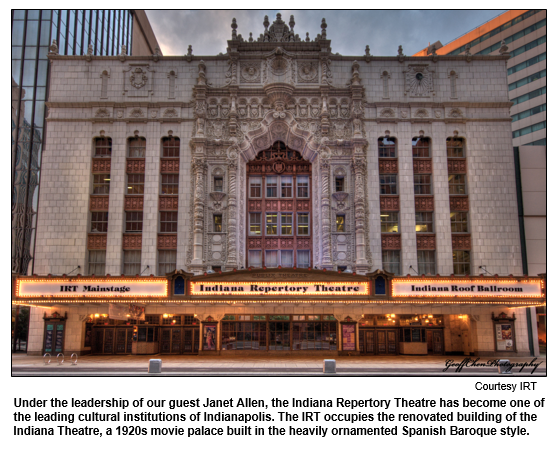 Although Janet Allen has been artistic director of the Indiana Repertory Theatre since 1996, her involvement with the state's acclaimed, professional equity theater company actually extends clear back to 1980.
Since becoming artistic director, Janet has significantly expanded the productions and services at the IRT, which was originally housed at another downtown landmark, the Athenaeum. (The inaugural production in 1972 was a performance of "Charley’s Aunt", a farce written in the 1890s.) For 19 years, Janet has worked with the IRT's playwright-in-residence James Still to create 15 new works known as the Indiana Series. James has been a Hoosier History Live guest in connection with several of those Indiana-focused plays. Most recently, he was a guest on a 2015 show in connection with "April 4, 1968," his play about the impact of Bobby Kennedy's historic speech in Indy on the night Dr. Martin Luther King Jr. was assassinated. Janet began at the IRT as its first dramaturg (literary manager) in 1980, the same year the theater company moved into the space previously occupied by the Indiana Theatre.
Janet Allen, who lives in a cottage built during the 1850s in downtown Indy, is a native of Illinois. She has studied theater at Illinois State University, Indiana University and Exeter College. Her array of civic and artistic honors includes a Distinguished Hoosier Award. In addition to Janet, the other Hoosiers who will be named Living Legends this year are Tamika Catchings, the recently retired star of the Indiana Fever who is considered one of the best women basketball players of all time; Mark Miles, president/CEO of Hulman & Co., who previously led the campaign by Indianapolis to host the 2012 Super Bowl; and civic leaders/philanthropists John and Sarah Lechleiter. The Living Legends gala will be at 5:30 pm July 28 at the Eugene and Marilyn Glick Indiana History Center, 450 W. Ohio St.© 2017 Hoosier History Live. All rights reserved. | |||||||||||
|


 During these shows, host Nelson Price is joined by a co-host with insights to share. With decisions about the Paris Climate Accord sparking responses from Indiana’s mayors and other public figures - and development possibilities along the White River igniting much discussion across Central Indiana - listeners will have the chance to ask questions of one of the state's top environmentalists.
During these shows, host Nelson Price is joined by a co-host with insights to share. With decisions about the Paris Climate Accord sparking responses from Indiana’s mayors and other public figures - and development possibilities along the White River igniting much discussion across Central Indiana - listeners will have the chance to ask questions of one of the state's top environmentalists.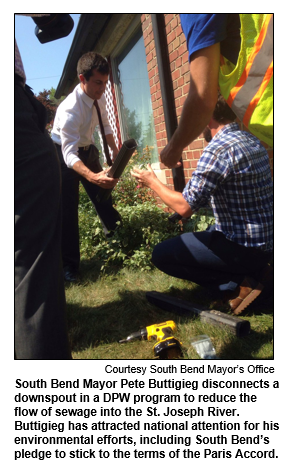 Turning to other environmental concerns, Nelson and Jesse will explore how civic leaders such as
Turning to other environmental concerns, Nelson and Jesse will explore how civic leaders such as 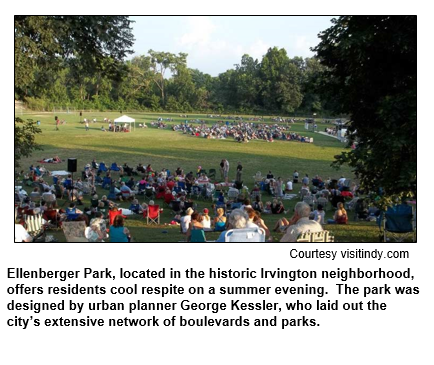 Ellenberger Park in the
Ellenberger Park in the 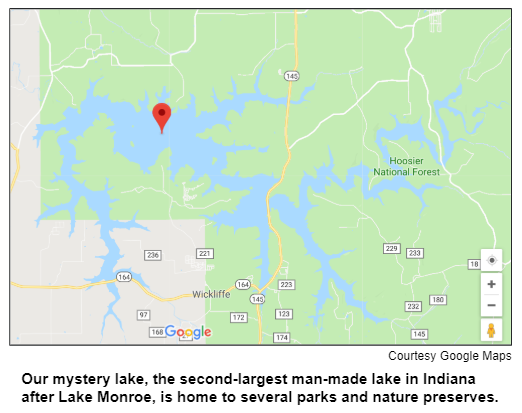
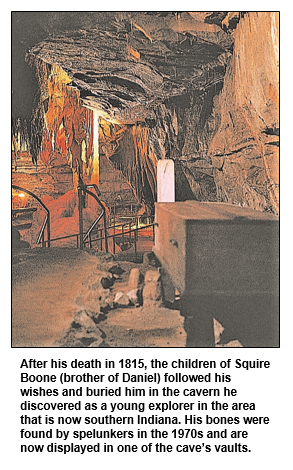 Although Indiana and Kentucky are now peaceful lands, back in the late 1700s when the Boone boys first came here, the area was full of hostile Native Americans who naturally resented the invading frontiersmen. Of the first eight white men to enter Kentucky, Squire and Daniel were the only two to remain alive. And it was Squire who saved his older brother Daniel during one of the skirmishes.
Although Indiana and Kentucky are now peaceful lands, back in the late 1700s when the Boone boys first came here, the area was full of hostile Native Americans who naturally resented the invading frontiersmen. Of the first eight white men to enter Kentucky, Squire and Daniel were the only two to remain alive. And it was Squire who saved his older brother Daniel during one of the skirmishes.






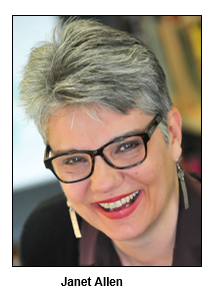 So Janet's upcoming designation as a
So Janet's upcoming designation as a  Built as the largest cinema in the state in 1927, the six-story Indiana Theatre eventually became the state's first with Panavision, 3-D capability and stereophonic sound. Classic movies such as
Built as the largest cinema in the state in 1927, the six-story Indiana Theatre eventually became the state's first with Panavision, 3-D capability and stereophonic sound. Classic movies such as